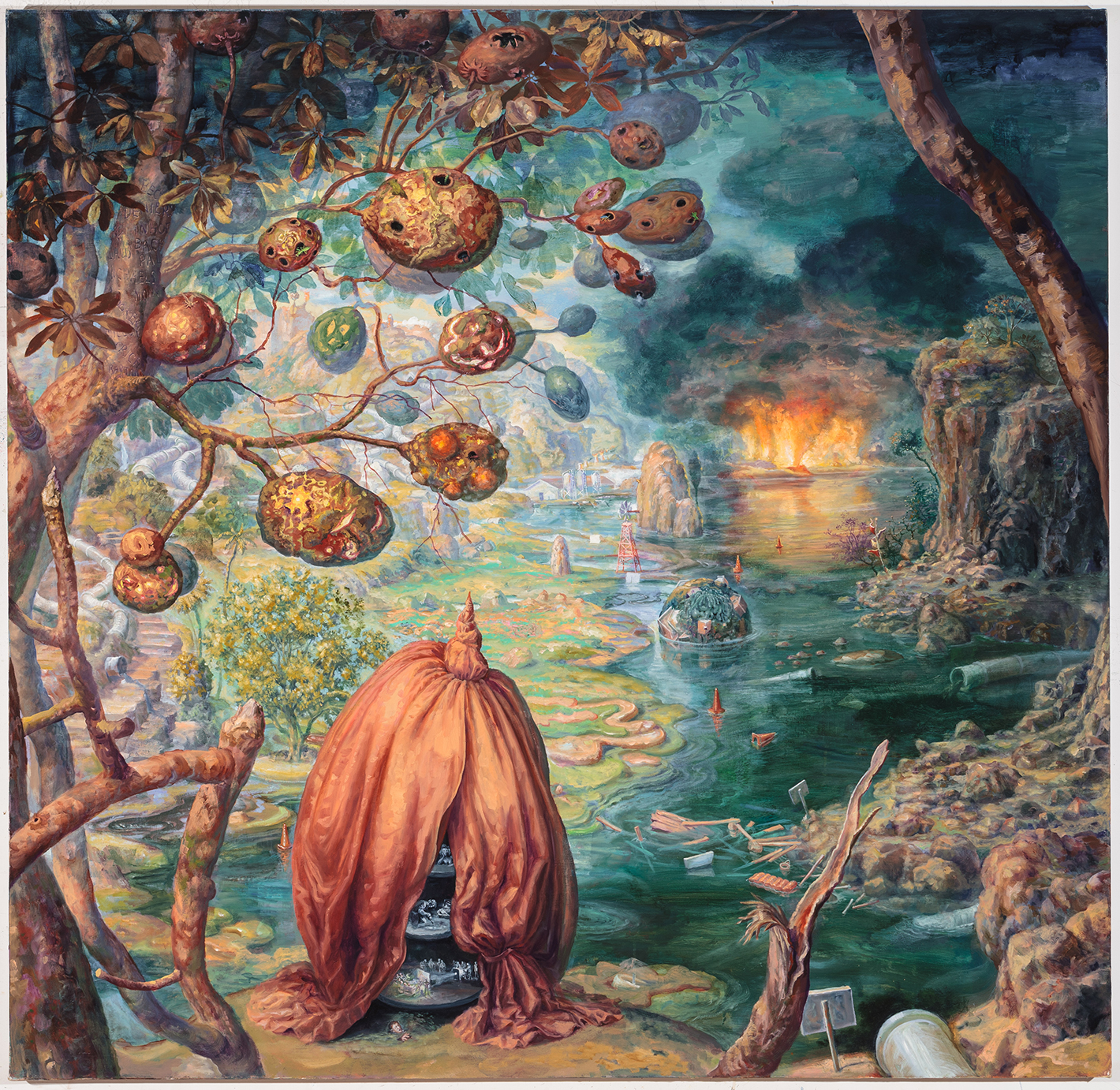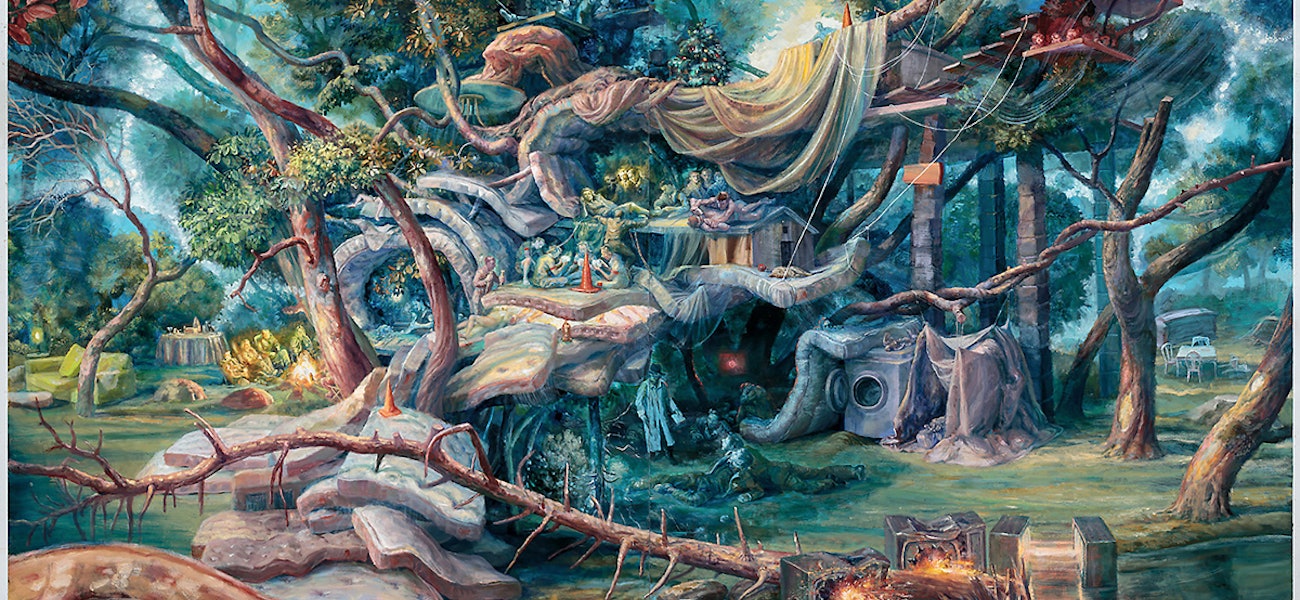Julie Heffernan feels like the stakes for her art are higher than ever.
As the country has transferred power to a new presidential administration, one of many topics to come under fire is climate change—namely, whether scientific evidence of climate change can be translated into national policy.
Heffernan comes down on the “science is law” side of the argument, and her art speaks to that. Albeit, a bit more illustratively.
Heffernan’s paintings have always been deeply entwined with social and political messages, with her early works focusing on her experiences with feminism and motherhood. But as her children grew, climate change came to the forefront of her work.
“That focus on an individual in any sense was no longer really relevant to my psyche or what was going on around me. So that, in conjunction with the fact that … superstorms [like Hurricane Sandy] made it immediate and urgent, it was clear to me that it made no sense for any communication mode to be about anything other than the urgency of our situation,” she says.

Her paintings borrow techniques of elaborate detail and figurative imagery from the religious artwork she was surrounded by during her Catholic upbringing and fuse them with aspects of historical painting, surrealism and intricate still lifes to create an imaginary future ravaged by climate change.
In the world of her paintings, the surviving residents of Earth have ascended into the trees to take shelter from rising waters.
She’s chosen this fantastical approach over more explicit, literal depictions of global catastrophes and climate disasters because she finds it more effective at communicating her message.
A darker, less nuanced approach, she says, would fall flat. This invites the viewer into a future as complex and imaginative as our own minds can be—and with that, a door is opened.
“The actual making of something is a constructive act. The painting will generally start off much darker, but in the process of building the house, you build in windows,” Heffernan says. “At the same time, imagining how we’re going to rebuild the environment, I’m building in the idea that humans are inclined to not only creativity but celebration of creativity. So they become structures that I think of as tropes for a psyche, where we have dark rooms and we have well-lit rooms. [Something more literal] would be a kind of screed, and I don’t think we need screeds.”
An exhibition of Heffernan’s works, “When the Water Rises,” opens at the LSU Museum of Art with a reception March 16, and the pieces seem especially relevant to a state still recovering from 2016’s natural disasters and fighting to save its coastline.
“When the Water Rises” is open to the public March 11-Sept. 17. lsumoa.org
This article was originally published in the March 2017 issue of 225 Magazine.








